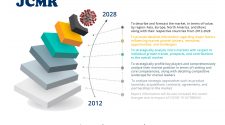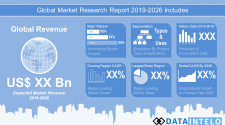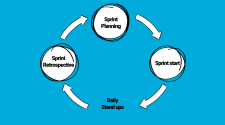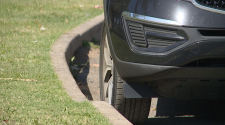By Gigi Karmous-Edwards
Water utilities around the world have been using hydraulic models for engineering and expansion since the 1950s. A hydraulic model is a physics based mathematical model of a fluid flow system for water. In the majority of cases, the hydraulic model simulation is run in batch mode with input parameters based on historical data. The output of the simulation provides the engineering teams with optimal design choices for determining pipe sizes, developing master plans and evaluating system expansions.
Over the past few decades, models have become more sophisticated by integrating data from the utility’s GIS system, SCADA and sometimes IoT devices. In some cases, utilities are starting to use the model simulations for operational uses.
Many utilities have increased the rate of adoption of digital technologies, such as IoT sensors, cloud computing and machine learning applications in recent years. These foundational technologies form the building blocks to change the way we use the hydraulic model. The increased computational power of cloud computing makes it easier to run the model in continuous mode, and with constant “pairing” of near-real-time operational data from the physical system, the model can be calibrated to behave like the real system. Some refer to that as a digital twin.
What is a Digital Twin?
A digital twin is a virtual or digital representation of the elements and dynamics (behavior or process) of a plant or system. If applied properly, a digital twin will influence the design, build and operation of the system throughout its lifecycle and help optimize operation through informed insights. In other words, it is a dynamic software model (hydraulic model + machine learning) of the physical plant/system that pairs a live feed from the real system to the digital twin for continuous calibration.
GE’s Collin Parris refers to it as “A living model that drives outcomes.” In a more urgent tone, Thomas Kaiser of SAP notes that “digital twins are becoming a business imperative, covering the entire lifecycle of an asset or process and forming the foundation for connected products and services. Companies that fail to respond will be left behind.”
Today, digital twin technology is used in all industries, ranging from manufacturing and medicine to transportation and utilities…and now the water sector. I think the water sector has been slow to adopt digital twin because the building blocks as stated above have not been adopted until recently.
At present, most utilities are utilizing hydraulic models for engineering and planning purposes. The models typically run in batch mode with many mathematical assumptions used as inputs. However, in order to convert to digital twin capabilities, utilities will need to migrate towards continuous real-time hydraulic models and calibrate by pairing data from real-time sensors, meters, SCADA, weather and more, with the digital twin. The digital twin becomes an integration platform that unites data from legacy systems and new digital solutions, providing a holistic view of operations. The digital twin can be used to run “what-if” scenarios, predict and prevent failures, provide early alerts of anomalies and conduct predictive analysis.
An example of a “what-if” scenario is if a field worker finds a leak in one of the pipelines in a distribution system and is trying to decide the most cost-effective way to bypass this part of the pipeline. She can use the digital twin to try out different bypass routes to see which path provides the least impact on customers. If the digital twin includes the chemical treatment process, operational personnel can run a simulation using a new chemical input and see the impact on water quality at different parts of the distribution system to determine how to proceed.
SWAN Digital Twin for H2O Work Group
In order to accelerate the adoption of digital twin technology I partnered with the SWAN (SMART Network Forum) organization to create a Digital Twin Work Group and am one of the three co-chairs of the group. The new SWAN Digital Twin H2O Work Group will help accelerate the water sector’s adoption of digital twin technology by bringing together global water leaders and stakeholders from utilities, technology companies, engineering firms, government and academia to help identify and solve relevant utility challenges. This is an ongoing group that will deliver outputs, such as best-practices and a roadmap for developing and maintaining a digital twin based on agreed upon objectives.
The Work Group is open to all interested at no cost – please join to receive updates. SWAN Members will also have the opportunity to become active members in the Work Group and collaborate to develop a common digital twin strategy for global water utilities.
The SWAN Digital Twin H2O Work Group was officially launched in May at the 9th Annual SWAN Conference with a pre-conference workshop. Some of the key objectives are as follows:
- Identify key challenges for utilities utilizing the hydraulic model in operational mode
- Identify key challenges with data accuracy and data normalization across multiple systems
- Develop a holistic view of a water system via the culmination of digital technologies: IoT, VR/AR, mobility, machine learning, cloud computing, drones, etc.
- Identify and develop best practices for hydraulic model calibration including the utilization of real-time data from consumption meters, GIS, SCADA, CMMS and other IoT sensors
- Identify and develop best practices for aggregating digital twin subsystems (i.e. a pump digital twin)
- Develop best practices for the collaboration of IT and OT in utilities
The water sector has indeed started to embrace the digital twin technology with many discrete pilots underway globally. I hope this group will provide a mechanism to move faster toward digital twin technology.
Gigi Karmous-Edwards is the founder and co-chair of the SWAN Digital Twin H2O Work Group, which works to help identify and solve relevant utility challenges using digital twin technology. Over the course of her 30-plus years in the industry, Karmous-Edwards has utilized science and engineering to solve global water issues an academic researcher, software and hardware developer, advisor and entrepreneur.

















